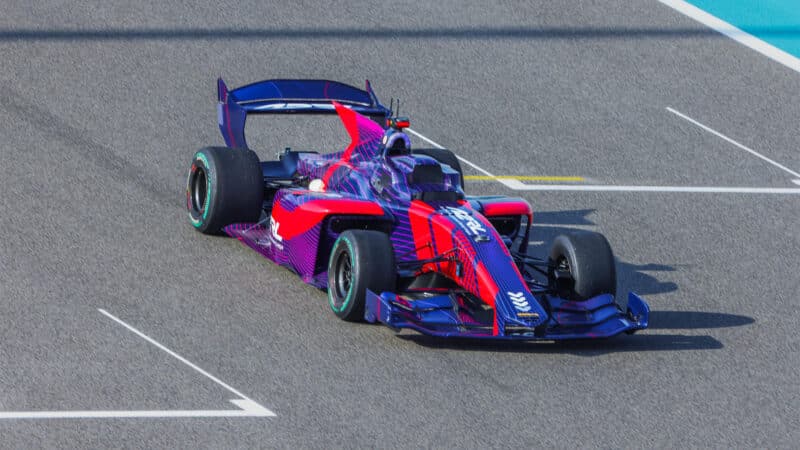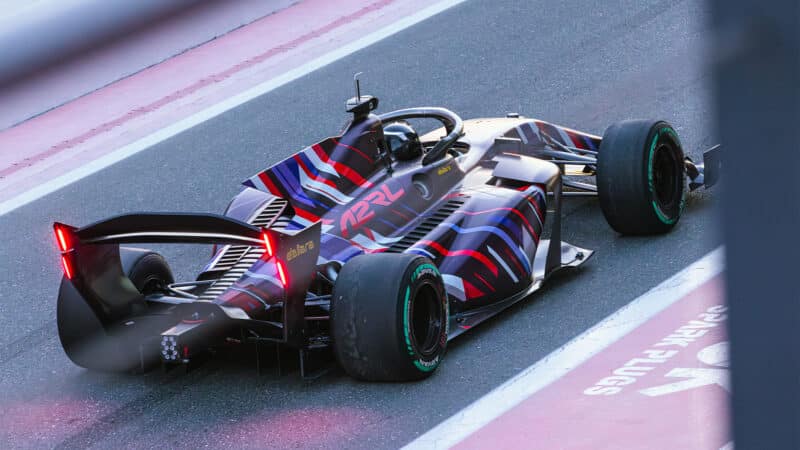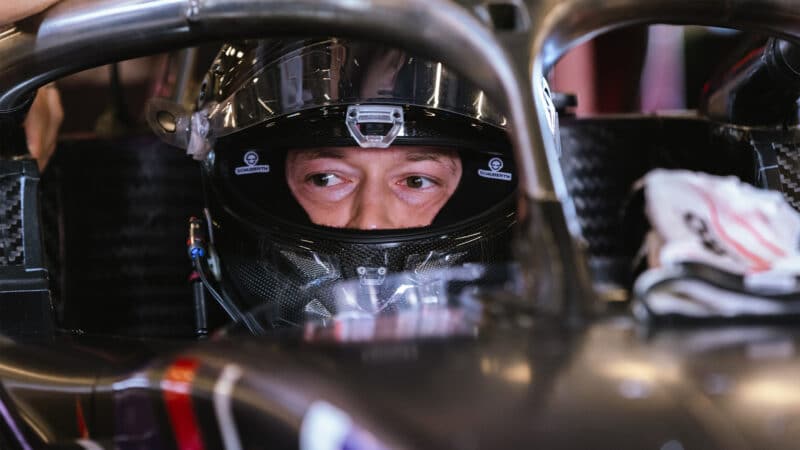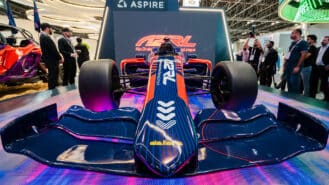In order to ensure there’s no latency or outage in communication between the car and the garage, the A2RL have also updated the entire IT infrastructure of the Yas Marina Circuit and will also be rejuvenating its broadcast systems so that the event can be streamed at a high quality across YouTube and Twitch as well as through VR headsets.
But despite the incredible application of science and technology taking place, there are still many who doubt the spectacle that the A2RL could to provide. After all, watching 10 faceless AIs — inspired by the relatively short-lived career of a mid-table F1 driver — engage in wheel-to-wheel warfare doesn’t sound particularly thrilling. But as McCarthy explains, the league will still contain a massive human element, with each car will taking on the personality of its coder.
“The differentiating factor between all these teams will be the strategy module. In other words, how aggressive or not will each car be in the lines it takes through corners and out of them? That really is gonna be reflective of the coder’s personality. Some may be slow and steady, while others may be aggressive and fast but could spin out.
“Either way, it will be a learning process for everyone and the opportunity to fail will still exist.”
McCarthy also confirmed that the league is finalising the multitude of formats which are set to take place over the course of its launch event — with some events set-up to promote failure and effectively create drama. “I liken it to the elements of show jumping,” he said. “Where ultimately you keep raising the wall until somebody fits, and [the winner is] the last person standing. I think we would put that sort of challenge in.” The field of 10 autonomous cars will also compete in more traditional events such as short grands prix, sprint races and time trials.

Every A2RL car will take on a different personality — could it result in exciting wheel-to-wheel driverless action?
A2RL
To McCarthy’s admission, there is still a long way to go — both in terms of the development of the cars and in changing people’s mind that the A2RL is in fact a good idea.
Most recently, the league teamed up with popular social media star Supercar Blondie, who took her fans for a tour of its 300kph Super Formula car — driven completely by AI — in order to try and explain the concept further. But despite the video receiving more than 12 million views across all platforms, the majority of comments made by the public were negative and questioned why AI was suddenly taking up almost every job that a human being currently occupies — even the most exclusive ones…
@supercarblondie These self-driving race cars can reach top speeds of 300km/h! 🤯🔥 Mark your calendars for the world’s largest @autonomousracingleague by #AspireUAE on April 28, 2024 at Yas Marina circuit, Abu Dhabi 😍🏁 #racing #motorsport #A2RL
Of course, these concerns are found in many other industries and are not just limited to motor sport. But as McCarthy insists this next step in AI evolution is not something to be scared of, and that it’s not here to replace Formula 1. Instead, it’s a new type of motor sport entirely which aims to educate and push the boundaries of modern technology – so he says.
“We’re celebrating new heroes,” he claims. “We’re putting all of the back office out there [on-track] and keeping the driver in the garage. We’re giving the instructions to it before it goes out, we’re crossing our fingers and we’re letting it off.
“Will this become the future of Formula 1? Absolutely not at all. In some respects, it could be if we developed a ‘man vs machine’ category. But right now there is a job on us to explain and demonstrate.
“We’ve got to change people’s mindset. We’ve got to reimagine what the sporting element is.”



